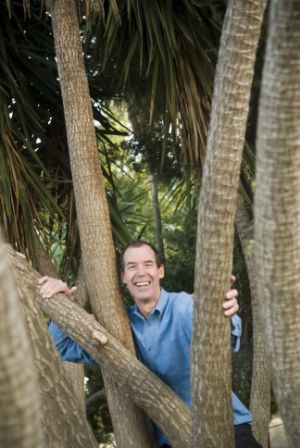American Forests’ Science Advisory Board member Dr. Greg McPherson is a research forester with the USDA Forest Service’s Pacific Southwest Research Station located in Davis, California. In 2000, he received the International Society of Arboriculture’s (ISA) L.C. Chadwick Award for Research. He chaired the ISA Science and Research Committee and serves on the California Urban Forest Council’s Policy Advisory Committee.
Why did you choose to go into urban forestry?
I grew up under a canopy of American elm trees in Howell, Michigan. Despite attempts to save the trees, all were lost to Dutch elm disease. Subconsciously, I felt the sting of that loss, and perhaps that is one reason I became a “green” accountant, developing new methods and tools for quantifying the value of nature’s services from city trees. After college, I worked in a nursery and came to really like trees. As a graduate student in landscape architecture, it became clear that I wasn’t a hot-shot designer. I did a study comparing the costs of compact versus sprawl development and was amazed at the interest those numbers generated. That led me into research, which has kept me close to trees while quantifying the value of their services.
What is the most surprising thing about urban forestry that you have learned or discovered?
I was surprised to learn that for every 20 percent increase in tree shade on residential streets in Modesto, the pavement condition index — a numerical index used to indicate the condition of a roadway — increased by 11 percent. I hadn’t realized how effective trees were at reducing pavement deterioration and the need for costly resurfacing.
What was the most difficult moment or encounter that you’ve experienced while studying or researching urban forestry issues?
One day, I was measuring trees around a house in Sacramento, and a resident called the police thinking that I was casing the joint. They came with sirens blaring and lights flashing, which was pretty embarrassing.
What do you think the biggest issue facing urban forestry is today?
Moving from the tree-planting paradigm to the tree-performance paradigm. For example, mayors in nine of the 12 largest U.S. cities have pledged to plant 20 million trees. Although their level of commitment to urban forestry is gratifying, it has placed the focus almost entirely on tree planting. This is problematic because their commitment to planting is largely driven by their belief that trees are a cost-effective way to combat climate change, protect water quality, conserve energy and improve human health. They know that regulatory policies are creating markets for services such as stormwater management, carbon storage, energy conservation and air quality improvement. However, as rules and reporting become more quantitative, the influence of long-term tree performance on compliance and return on investment grows. This means that tree planters will be accountable to regulators and investors, not just for the number of trees planted, but for their long-term performance. One challenge to this paradigm shift is developing tree monitoring systems that provide continuous feedback resulting in improved performance over the long-term. Another challenge is to incentivize their use! Hopefully, emerging markets for ecosystem services produced by trees will make it happen.

Who is your favorite fictional scientist?
My favorite is Q from the Bond books and movies, whose creativity was focused on solving real-world problems, like keeping 007 alive. His gadgets were innovative and effective.
If you weren’t a scientist, what would you be?
If I wasn’t a scientist, I’d be in the green burial business. I’m attracted to the idea of creating multiple options that benefit the environment for green consumers who have lost loved ones.
What is your favorite aspect or favorite part of your field?
Discovering new and unexpected things. Recently I was collecting data for a life cycle assessment of GHG emissions associated with nursery production of trees. The more data I collected on emissions associated with energy use (e.g., warming the greenhouse, pumping irrigation water, vehicles and equipment), consumable materials (e.g., millions of plastic containers, coir from India, bamboo stakes from China, fertilizers from Utah, bark from Oregon) and transportation (e.g., trains, vehicles used to collect and ship seed, transoceanic shipping and trucks), the more I thought that a tree would not sequester as much carbon as was released during its production. I was really surprised to find that on a per tree basis, GHG emissions were only 20 to 50 percent of the amount that a tree typically sequesters each year. I thought that the emissions would be a lot more.
Where was the most interesting place you were able to travel to in the name of science and why?
I’ve been fortunate to travel to some pretty interesting cities and surrounding forests to study trees. In Australia, I was intrigued by the different issues that cities faced. In Sydney, the bats were taking a terrible toll on trees in the Botanical Garden. Drought was threatening the historic avenue plantings in Canberra, and wildfires had just devastated forested areas around Melbourne. Despite the challenges, there was no quit in the Aussies.
Do you have a favorite story from your years in urban forestry?
Not fit to print!
Where is your favorite spot to experience nature?
I enjoy mountains and have climbed the highest peaks in California, Wyoming and Ecuador. I also like to fish in nearby mountain rivers to get away from it all. I participate in triathalons, so on an everyday basis, I am usually working out.
